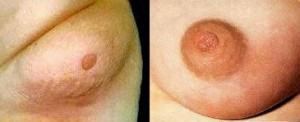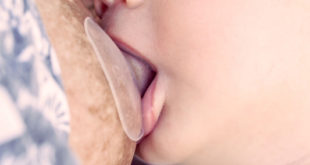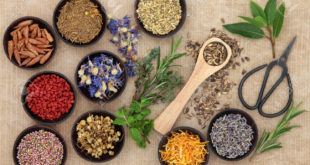 Some mothers nurse several babies and never experience plugged ducts or mastitis (breast infection), while others have recurrent episodes. There are many reasons for these problems to occur, but treatment is essentially the same: rest, apply heat, breastfeed often on the affected side, and use antibiotics only when medically necessary.
Some mothers nurse several babies and never experience plugged ducts or mastitis (breast infection), while others have recurrent episodes. There are many reasons for these problems to occur, but treatment is essentially the same: rest, apply heat, breastfeed often on the affected side, and use antibiotics only when medically necessary.
A plugged, or clogged, duct is a sore, tender lump or knotty area in the breast. It occurs when a milk duct is not draining well, and inflammation builds up. The area may be warm to the touch and red, and if it is located in a duct close to the surface of the skin, you may be able to feel it distinctly with your fingers. A plugged duct is not accompanied by fever. If the plugged area is not drained, pressure can build up behind it and cause the surrounding tissue to become inflamed. If a large area of the breast is inflamed, hard, and tender, it is sometimes referred to as a “caked breast”. Usually a plugged duct or caked breast occurs in only one breast at a time.
If the plugged duct is accompanied by flu-like symptoms (body aches, nausea, fatigue, headache) and fever, it is called ‘mastitis’, or breast infection. There will usually be a hot, tender, splotchy reddened area – usually on the outer and upper part of the breast, but it can occur anywhere. Like plugged ducts, mastitis usually occurs in only one breast. Mastitis is usually associated with Staph bacteria – when it occurs in both breasts, it may be caused by Strep, and can be more difficult to treat.
Plugged ducts most often occur in women with abundant milk supplies, and occur more frequently during the early weeks of nursing, and during the winter months. Anything that contributes to inadequate drainage of the milk ducts can increase the incidence of plugged ducts. Contributing factors can include: missed, shortened, or scheduled feedings (this is one reason nursing mothers are more prone to get plugged ducts during the holidays or other periods of stress – they tend to be busier, and their schedule is more hectic), improper latch on and positioning, and anything that puts consistent pressure on the ducts ( including poorly fitted bras, a diaper bag strap after a day of shopping, or even sleeping on your stomach). Sometimes the baby changes his feeding schedule, either because he is sleeping through the night, he has a cold and doesn’t nurse as often, he is teething, or is beginning to wean. Eventually, your body will adjust to these changes, but abrupt changes can cause plugged ducts, which may develop into an infection if not treated.
Most plugged ducts will go away within a couple of days without developing into mastitis, if noticed promptly and treated aggressively. If the milk flows freely through the ducts, bacteria is flushed out and doesn’t have a chance to multiply. However, milk that stagnates in the ducts allows bacteria to grow. That’s why the first step in treating a plugged duct is to empty your breasts frequently and completely.
Other suggestions include:
- Apply moist heat before nursing (compresses, warm shower or bath, or leaning over a sink full of warm water). This will help increase circulation to the area and unclog the lump.
- Sit around with a heating pad on a low setting between feedings, especially during the night. This can also help dissolve the clog.
- Take pain medication if you need it. Ibupropen (Advil or Motrin) is usually better than acetaminophen (Tylenol), because it contains ingredients to reduce inflammation as well as pain and fever. (See When a Nursing Mother Gets Sick for more information about OTC meds)
- Drink lots of fluids, especially if you are running a fever (Temp over 100.5 degrees).
- Encourage the baby to nurse frequently (at least every two hours) and vary the nursing positions so pressure will be put on different ducts. One very strange, but effective nursing position is hands and knees. Try putting the baby down on the bed or on a blanket on the floor and lean over him on all fours. Let your breast hang straight down, falling freely from your rib cage. Try not to let anyone see you doing this because they will probably fall over laughing. If you don’t want to use this method, or you’re nursing in public, you can lean over the baby so that your breast is facing down. This helps drain the milk ducts more efficiently than other positions.
- Sleep on your back or side without putting pressure on the sore breast.
- Wear a supportive bra, but make sure it fits well. If you see a red mark on your skin when you take off your bra, then it’s probably too tight. Try to avoid underwire bras – they can put additional pressure on the milk ducts.
- Offer the sore side first, but before you do, try to hand express a little to soften the areola and get the milk started flowing before your baby starts nursing. Gently massaging the lumpy area in a circular motion, starting behind the lump and working toward the nipple, can help loosen the plug.
Sometimes when the clogged milk is released, you may see something strange coming out of your nipple. It may look like a strand of spaghetti or a grain of sand. Don’t be surprised – it’s just the clogged milk secretions working their way out. If the baby is nursing when this happens, you won’t even be aware of it, and it won’t hurt him if he swallows it. If you are pumping, however, it can be a little scary if you see this strange stuff coming out if you don’t know what it is.
In addition to plugged milk ducts, you can also get plugged, or clogged, ducts in the nipple pores. These nipple “blebs”, or “milk blisters”, occur when a nipple pore gets clogged and the skin seals over it. The milk backs up inside, and the area becomes inflamed and sore. The spot can be white or yellowish, depending on how long the milk has been backed up. The nipple blebs usually clear up within a few days, but can be extremely painful.
The treatment for nipple blebs is similar to the treatment for plugged ducts. Use warm compresses to soften the blister before you nurse, and nurse as often as possible. Between feedings, you can use cold packs to numb the pain and take an analgesic like Advil to help with the discomfort.
Usually the baby’s suckling will pull out the clog of milk, just as it will pull milk out of plugged ducts. If it doesn’t come out when the baby nurses, try applying warm compresses, and pumping or hand expressing after you nurse.
If the blister doesn’t open on its own, you might need to drain it yourself. Take a sterile needle and break the skin over the blister, then gently express the clogged milk. Afterwards, apply hydrogen peroxide and an antibiotic ointment like Neosporin to prevent infection. Contact your doctor if any signs of infection develop, such as inflammation, pus, or fever. Usually, the blister won’t come back, but if it does, then you should contact your doctor to see if it needs to be further evaluated and treated.
If you have several blisters instead of just one, then the cause is often thrush (yeast infection). Usually with a yeast infection you will have some other symptoms in addition to the blisters: burning pain, sensitivity to touch, shooting pains inside your breast, and possibly symptoms in the baby as well (diaper rash, gassiness, milky coating on tongue, etc.). The blisters seen with advanced yeast infections are usually not filled with a visible milky fluid like nipple blebs, but are reddish and usually occur in more than one spot. It’s also not unusual for yeast to occur on both breasts at the same time, but nipple blebs seldom show up in more than one spot on one nipple.
Read the article Yeast Infections and Thrush to see if a yeast infection might be causing or contributing to your plugged ducts.
- Get rest, rest, and more rest. If possible, find someone to help with the housework and other kids for a day or two and take your baby to bed with you. If that’s impossible, try at least to eliminate any extra activities and find time to put your feet up for an extra couple of hours while you nurse.
- Usually, if you follow these guidelines after discovering a plugged duct, you will feel better and the lumpy area will go away within twenty-four hours. Even if you have a low-grade fever (less than 101 degrees), you may want to try the measures mentioned above before calling your doctor.
- Once a plugged, inflamed area has progressed into full-blown mastitis, it is important to contact your doctor immediately to discuss use of antibiotic therapy. About one third of nursing mothers will develop mastitis at some point. This most often occurs during the first few weeks after birth. Only one third of the cases occur after baby is six months old, and one quarter after baby is twelve months old. Mastitis is also more common in mothers aged 30-34, in women who work outside the home, and during the winter months. Often mothers report unusual periods of stress, extreme fatigue, or a cracked nipple (any break in the tissue allows a route of entry for bacteria) before an episode of mastitis. The type of mastitis following a break in the nipple tissue usually occurs during the early weeks of nursing.
Contact your doctor immediately if:
- Both breasts are affected
- The nipple looks infected, and pus or blood appear in the milk
- Your fever shoots up to over 101°, especially if symptoms came on suddenly
- There are angry looking red streaks near the sore area
- You have tried the suggestions above for treating plugged ducts for 24 hours, and symptoms worsen instead of improve
If she determines that you have a bacterial breast infection, your doctor will probably prescribe an antibiotic and possibly a pain relieving medication. The medication will probably be a broad spectrum antibiotic – these are generally effective against both Staph and Strep. Antibiotics often used to treat breast infections are Augmentin, Keflex, or Ceclor. Discuss your options with your doctor, making sure that she knows how committed you are to continuing to breastfed your baby. These medications, like most antibiotics, are compatible with breastfeeding. Remember, babies are given antibiotics when they get sick, and your baby will get much less of the drug via your milk than if he were to take it directly. (See article Drugs and Breastfeeding).
You will need to take the medication for 7-10 days. Be sure to take the complete course as prescribed. Even though you should feel much better within 24-48 hours of taking it, and sometimes even sooner, it is important to take it all. Otherwise you may kill off the weaker bacteria, but some will stick around and might make the infection recur later.
Most of the time when a breast infection recurs within a few weeks, it means the original infection was not completely cured. If you do have chronic mastitis, and you have ruled out problems such as latch-on, breast compression, scheduling feedings, etc., you may need to take a small daily dose of an antibiotic for longer periods of time. Discuss this with your doctor. Some research has found that changing your diet by reducing saturated fats and adding a tablespoon of lecithin (found at the health food store) each day may help avoid chronic plugged ducts.
In very rare cases, a breast infection may develop into a breast abscess. This is an infection which comes to a head and collects pus, like a boil. It may open by itself and drain, or may require a doctor’s incision and drainage. Let me emphasize how unlikely this is to happen: in over thirty-five years of experience, I’ve only encountered four or five cases. These cases were either woman with particularly nasty hospital acquired Strep infections, or women who had ignored the symptoms and not sought treatment until the infection was too far progressed. Your grandmother’s generation used to experience breast abscesses a lot, not because they were anatomically different, but because mothers back then were encouraged to put babies on a rigid schedule (leading to plugged ducts), and were then told NOT to nurse their babies because the milk was infected and would make them sick. Nowadays, nearly every doctor knows that the milk from an infected breast will not harm the baby in any way, because antibodies in the milk protect him from infection.
In the unlikely event that a breast abscess does develop, and surgical drainage is necessary, there is usually no reason to stop breastfeeding. If the incision isn’t on the nipple, and his mouth doesn’t come in contact with it, he can continue nursing on that breast. If the incision is on or near the nipple, you can nurse on the other side and express milk from the affected breast while the abscess is draining. Usually within a few days, once the drain or stitches are removed, you can resume nursing on the affected breast.
After a bout of mastitis, several things may occur. Sodium and chloride levels in the breast can rise, making the milk temporarily taste salty. The baby may or may not be bothered by this difference in taste. The affected breast may produce less milk temporarily as it goes through a resting phase. Again, this may or may not be a problem, but some babies become fussy at the affected breast due to the difference in taste and amount. These problems are only temporary. The article Nursing Strike has information on how to encourage your fussy nurser to take the breast.
Anytime you have taken an antibiotic, you are at risk for a yeast infection – not just a vaginal infection, but one on your breasts, your baby’s mouth or diaper area as well. It is a good idea to begin taking Acidophilus as soon as you begin the antibiotic, and to familiarize yourself with the symptoms of yeast overgrowth in you and your baby as well, so that if symptoms occur you can treat them early. The article on Yeast Infections or Thrush has information on how to spot the early signs of candida infection, including photos of what an overgrowth of yeast looks like in the baby’s mouth and diaper area.
Plugged ducts are a fairly common occurrence during the course of lactation. Once you have one, you will know to watch that ‘trouble spot’ because it probably means that you have a duct that tends to not drain efficiently, and if the problem recurs, it will most likely be in that same spot. This allows you to promptly begin treatment, and hopefully prevent the occurrence of a breast infection. Remember that the likelihood of getting plugged ducts or mastitis decreases the longer you breastfeed, and if they do develop, the best thing you can do for you and your baby is to keep nursing.
Since breast infections are so common among lactating mothers, all women need to know that there is an aggressive form of breast cancer that has some of the same symptoms as mastitis. Inflammatory Breast Cancer, or IBC, is a very rare form of cancer, and it isn’t detected by a mammogram.
Remember that your risk of developing any type of breast cancer while you are child bearing age is very small. Evidence also shows that breastfeeding for six months or more significantly lowers the nursing mother’s risk of cancer, so your risk is even less.
Even though the chance of a breastfeeding mother developing this form of cancer is extremely low, it’s still important for nursing mothers to know how to tell the difference between a breast infection and IBC. Here are some of the ways they are different:
- With IBC, you may develop sudden swelling. With mastitis, you may experience some swelling in the affected area, but it usually starts with a small tender area or lump, instead of appearing suddenly and without warning.
- With IBC, you may have an itchy red rash covering all or part of the breast. With mastitis, the inflamed area is pink or reddish, but usually isn’t spread out like a rash, and doesn’t itch.
- With both mastitis and IBC, your breast may feel warm to the touch. With mastitis, the infected area of the breast is also often warm, and this is normal.
- With IBC, you may experience overall breast tenderness or pain. Pain can also occur with mastitis, but the breast is usually tender to the touch only directly over the infected area.
- With IBC, you may have swollen lymph nodes under the arm. Swollen nodes can also occur with mastitis, but are usually not present unless the infection goes untreated and spreads out along the milk ducts.
- With IBC, you may notice change in the nipple or areola, such as inversion or retraction. Nipple changes are rarely seen with breast infections.
- With IBC, an area of the breast may look like a bruise that won’t go away. This is rarely present with mastitis. Instead, there is usually an area that is light pink, over and around the infected area.
- With IBC, you may have a bloody discharge from the nipple. This is rarely seen with mastitis, but blood can sometimes appear in a nursing mother’s milk due to cracked nipples, or tiny broken blood vessels inside the breast. Seeing a tiny bit of blood in your milk is normal, and is no reason to panic.
- With IBC, the skin on the breast changes texture, and the nipple and areola often appear thick and pitted like an orange peel, with ridges and small bumps; (see pictures of IBC and mastitis to see the difference). Mastitis rarely changes the overall texture of the breast, although it may feel tight and swollen while the infection is present.

IBC Mastitis You do not have to have all these symptoms to have IBC, and it doesn’t mean you have IBC if you have one or more of the symptoms. The only way to determine if you have any type of breast cancer is through a biopsy. If you feel that you may have symptoms of IBC, see your doctor immediately, especially if you aren’t currently nursing. Chances are that he will confirm that you have a common old garden variety breast infection, and you can breathe a sigh of relief.
Resources
NHI, National Cancer Institute: Inflammatory Breast Cancer
Anne Smith, IBCLC
A nipple “bleb”occur when a nipple pore gets clogged and the skin seals over it. The milk backs up inside, and the area becomes inflamed and sore. The spot can be white or yellowish, depending on how long the milk has been backed up. Nipple blebs usually clear up within a few days, but can be extremely painful.
 Breastfeeding Basics
Breastfeeding Basics



